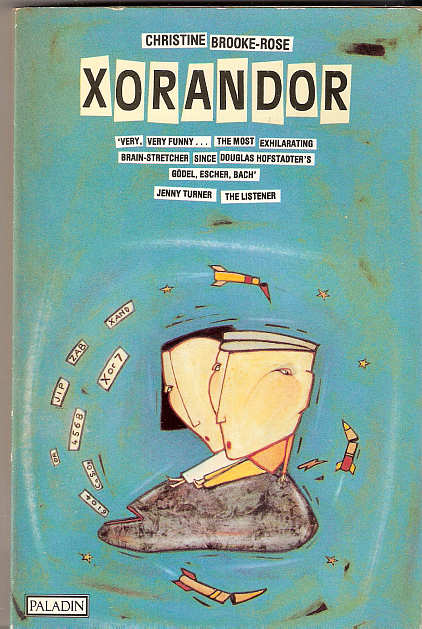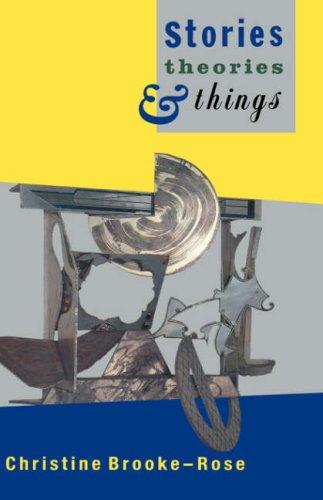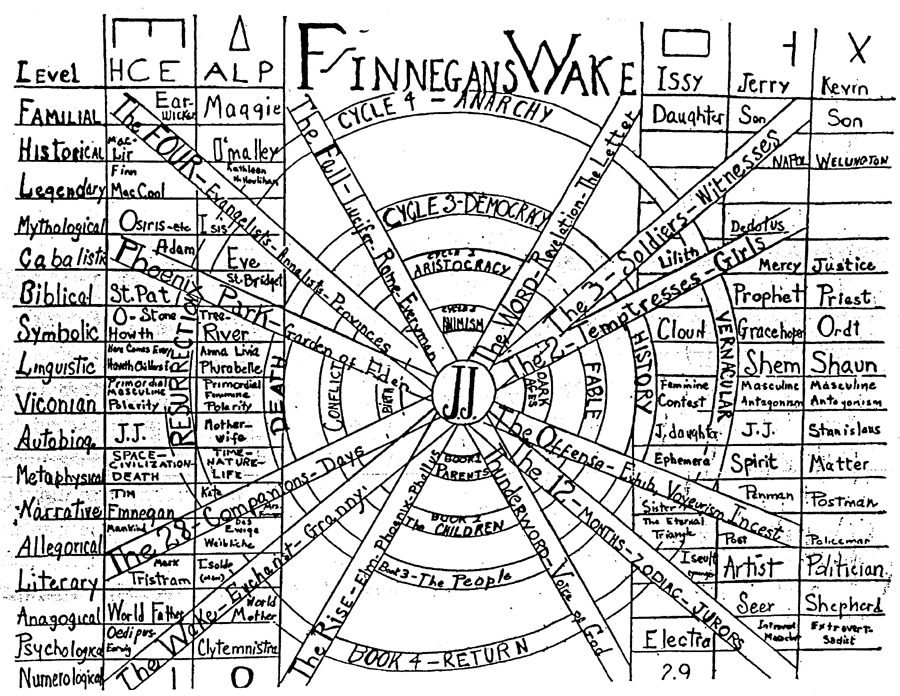 Xorandor (1986) is a novel by Christine Brooke-Rose (1923-). Jip and Zab are preteen twins who speak a weird, unfamiliar slang and meet up with a talking rock that turns out to be a foreign lifeform from Mars, which they dub Xorandor. They communicate with it using a programming language somewhat akin to BASIC, and they discover it can consume radiation particles. This then spins into a tale of spies, nuclear disarmament, and a disorganized offspring of Xorandor who gets scrambled, decides it is Lady Macbeth, and demands that it and its brethren be given endless radiation or it will create a critical mass and destroy a good part of England. Jip and Zab work with Xorandor to stop its mad offspring, speaking to it in that same programming language, and they also discover more about Xorandor’s real provenance and nature.
Xorandor (1986) is a novel by Christine Brooke-Rose (1923-). Jip and Zab are preteen twins who speak a weird, unfamiliar slang and meet up with a talking rock that turns out to be a foreign lifeform from Mars, which they dub Xorandor. They communicate with it using a programming language somewhat akin to BASIC, and they discover it can consume radiation particles. This then spins into a tale of spies, nuclear disarmament, and a disorganized offspring of Xorandor who gets scrambled, decides it is Lady Macbeth, and demands that it and its brethren be given endless radiation or it will create a critical mass and destroy a good part of England. Jip and Zab work with Xorandor to stop its mad offspring, speaking to it in that same programming language, and they also discover more about Xorandor’s real provenance and nature.
My criticisms of the book ultimately fall away in the face of its mere existence. Boy is it a strange one. Thomas M. Disch reviewed it when it first came out, comparing it to A Clockwork Orange and Riddley Walker, clearly on the grounds of its distended language. But Brooke-Rose’s use of code snippets (in a BASIC-like language of her own design) as well as a certain lack of fluency with the concepts of computer science makes it both less and more than those other two books.
It is more in that neither Burgess nor Hoban attempted to graft a formal symbolic language onto English, preferring instead to deform English into a new, imagined human language. It is less in that the graft does not take: Brooke-Rose cannot create the hybrid she attempts, because she treats the symbolic language as human language when it is is not. To explain the nature of this failure is to understand the multilayered nature of metaphor and analogy in natural language.
Before critiquing, though, let me praise Brooke-Rose’s achievement. She engaged with the syntax and semantics of what I gather to be a genuinely foreign domain, and she managed to utilize them logically and cogently in a novel, at a level that I’ve only seen in Vernor Vinge (who, besides having background in the relevant domains, is a far more conventional and unimaginative writer). She did this well into her career, and she did this in the mid-80s, well before any such concepts had penetrated into the mainstream. Compared to the contemporaneous Tron, Xorandor is an algorithms textbook.
I caught a few slip-ups where she uses terminology in an invalid way or attempts to draw an analogy based on a misunderstanding of a particular formal concept, but really only a handful, which is really rather stunning for someone coming to the material for the first time. So my aesthetic criticism is balanced by my immense admiration for Brooke-Rose’s adventurousness, curiosity, and diligence.
The only hint of previous background I’ve found is in Frank Kermode’s piece on Brooke-Rose, where he says she served at Bletchley Park in World War II, alongside the likes of Alan Turing. Yet there is little here that has to do with the theoretical aspects of computer science. Brooke-Rose is interested in computer languages as language, not as a practical tool. Yet the problem lies in the inseparability of these two aspects.
Consider this representative piece of code from the book:
ABSTRACT 2 RUN
JIP AND ZAB
REM JIP AND ZAB NOW = ZIP ENDREM
DEC 1 'ZIP USE SAME LANGUAGE RESTRICTED TO
STRUCTURES MORE ELEM THAN ON SOUND WAVES AND/OR INEFFICIENT SEQUENCE CONTROL' ENDEC 1
DEC 2 'POOR LEXIC BUT SOME UNFAMILIAR' ENDEC 2
ENDRUNThe vast majority of the code, in fact, ends up being DEC and REM statements, which allow Brooke-Rose to use English primarily in the code. These statements are made to seem more computer-like by mutilating English syntax, but they are no closer to actual computer language than English. She has taken the syntax of computer language and some of its semantics, but overlaid it with slightly altered natural language semantics. Within a REM or a DEC statement, anything goes.
Brooke-Rose makes steps toward accommodating formal language semantics within the DEC and REM statements, such as pointing out the problems of indefinite antecedents, but they are small and tentative, and these issues, which would be at the heart of an effort to deal with the difference between logical and natural language, fall by the wayside in favor of moves that belong purely in the realm of natural language.
The problem is that Brooke-Rose has not lived the language she is appropriating. This is as great a problem with a programming language as it is with a human language, although the nature of the problem is different. By utilizing programming language to serve the purposes of a human language, she neglects the very nature of the language, and so the result is akin to what would happen if one were to write poetry in an unknown foreign language with only a translating dictionary as a guide. It is the confusion of the (partial) definition of a word with the knowledge of its many uses and place in the language. Programming language is simpler than natural language, but by ignoring the greater part of the purposes the language can serve, Brooke-Rose’s code is enfeebled.
The problem manifests itself in Jip and Zab’s slang as well. Here is a brief bit of dialog:
Zab, do we have to reconstruct every conv?
That’s what storytellers do Jip, or else they invent them. But we can’t, this is real.
Floating-point real or fixed-point real?
Endjoke.
This rings false because this is not a joke programmers would make. (There are many others like it in the book.) The mere dual definition of “real” as both meaning “actual” as well as “a number belonging to a continuum” does not make it suitable grounds for a pun. Even puns, which exist on the surface level of language, require some conceptual apparatus to link their two meanings. By making the linkages purely on the lexical level, Brooke-Rose betrays a lack of conceptual knowledge of the language she is adopting.
To recast this exchange with German instead of computer language:
I have committed a mortal sin.
Are you sure it wasn’t merely a mortal bedeutung?
Endjoke.
Punning on Frege’s Sinn/Bedeutung distinction in this context serves no purpose. We can have some fun this way (I originally tried to do it with kind, kinder, and art), but it does not lend any greater meaning to the matter at hand or illuminate the connections between English and German. If anything, it trivializes them.
I have criticized science and engineering people for adopting too literal and too concrete metaphorical models of emotion and humanity. Rod Humble’s The Marriage was a model example, in my opinion. But this is a critique in the other direction, of the fact that Brooke-Rose has adopted the syntax and semantics of a domain without understanding their practical usage. That practical layer, which I hesitate to call sub-linguistic because it is still linguistic, is one that writers too often ignore. Beneath the shuffling of imagery and semantic ambiguity often lies a linguo-conceptual level as arid and stale as a formulaic plot.
The grammatical, rhetorical, lexical material of computer science have been employed without much of their actual content. Very little of the code apparatus serves much purpose except to give shape to the narrative that would otherwise be done with the usual natural language devices. Because Brooke-Rose chose a computer language rather than a natural language, the gap between the two languages is huge and starkly reveals what more subtle shifts do not. It is not always so clear what gets left out when interweaving two languages.
An analogical strategy of linguistic substitution is one of the core skills of any writer. Xorandor very clearly shows what such strategies easily miss or take for granted: the underlying, mutable conceptual matter, made to seem irrelevant by the manipulation of surface-level syntax and semantics, but in fact distinctively present. This matter is not plot, though it can take the form of plot; it is the subcutaneous ideological and structural stuff of writing and life that language captures inexactly, imprecisely and in multifold ways, but which is nonetheless there. It is present in the technical uses of computer language that Brooke-Rose did not make use of. This matter lies not in syntax or semantics, but in pragmatics and superstructure. And that is what is precisely missing, almost totally, in Brooke-Rose’s use of computer code. The deficiency of the book is astonishingly illuminating.
In this sense, Brooke-Rose is firmly ensconced in her time, in the post-structuralist milieu in which language slippages occur purely at the surface level of syntax and atomic signification. This anti-conceptualist dogma of deconstruction has been tremendously detrimental to the creative spirits of many writers, who too often forsake all thoughts of a deeper conceptual structure underpinning languages in favor of an emaciated, localized play on the simplest of word associations, as prescribed by the primitive associative models of Derrida and Lacan and the rigid structuralist networks of Barthes. Puns often come to dictate analogies rather than analogies dictating metaphors.
Brett Bourbon mischaracterized this deeper conceptual realm as the realm of nonsense, talking about deformations of language. But these deformations of language, exemplified by those of Finnegans Wake, are not excursions into nonsense, but attempts to pull and reshape our conceptual language in unfamiliar directions.
Most literature, of course, settles for much less than this. It is not necessarily a writer’s responsibility to operate on this linguo-conceptual (linguo-pragmatic?) level, but I believe the mark of truly substantial literature (as opposed to merely great writing) is indeed a work’s ability to wreak havoc to existing linguo-conceptual structures.
The challenge in addressing these structures and grasping them even partly is immense, and falling back on simplifications is tempting and sometimes sufficient to create a decent work of art. But only decent. The human tendency to reduce and simplify into models is unavoidable, but complacency with them, an unwilingness to accept their provisionality, is an unforgivable offense against our rational and creative powers. Every writer of “experimental” prose should reflect on this book and wonder if their amalgamation of novel lexical and semantic overlaps is only serving to reiterate unoriginal macrostructures.
Yet Brooke-Rose is smart enough to recognize this, and her essay collection Stories, Theories and Things (1991) shows her to be a keen and precise critic who draws on structuralist, deconstructionist, and speech act theory without becoming obfuscatory and usually not too straitjacketed. The essays on gender and writing, in particular, are some of the best I’ve read on the subject in ages.
And here she speaks, I think, exactly to the problem I describe above, the narrowness of the conceptual apparatus so often at work in writing:
Now knowledge has long been unfashionable in fiction. If I may make a personal digression here, this is particularly true of women writers, who are assumed to write only of their personal situations and problems, and I have often been blamed for parading my knowledge, although I have never seen this being regarded as a flaw in male writers; on the contrary. Nevertheless (end of personal digression), even as praise, a show of knowledge is usually regarded as irrelevant: Mr X shows an immense amount of knowledge of a, b, c, and the critic passes to theme, plot, characters and sometimes style, often in that order. What has been valued in this sociological and psychoanalytical century is personal experience and the successful expression of it. In the last resort a novel can be limited to this, can come straight out of heart and head, with at best a craftsmanly ability to organize it well, and write well.
What she also implies, which is something worth spelling out, is that the most egregious exponents of this anti-conceptual anti-knowledge tendency have not been novelists, but literary theorists, who too often not only sought little knowledge beyond their narrowly-focused reading, but then built even more constraining systems around those impoverished areas!
I will not analyze her criticism in detail here; I am only interested in how it serves to illuminate further the noble failure of Xorandor, as well as the less noble failures of countless other books. If Xorandor does not free itself from its theoretical shackles, its immersion into foreign territory remains a notable effort to escape the orbit around the endless deferral of signification.
That is to say: when we are captivated by the shiny surface of language, when pyrotechnics and puns and prestidigitation of words comes to substitute for attention to the far deeper realms of the conceptual and practical use of even the most ordinary language, then we have come to treat language as a solipsistic activity that turns us inward and away from the world. And so such linguistic activity becomes a way of avoiding life.
If we are content to refine and nourish only the epidermis of language, we let the innards rot.

